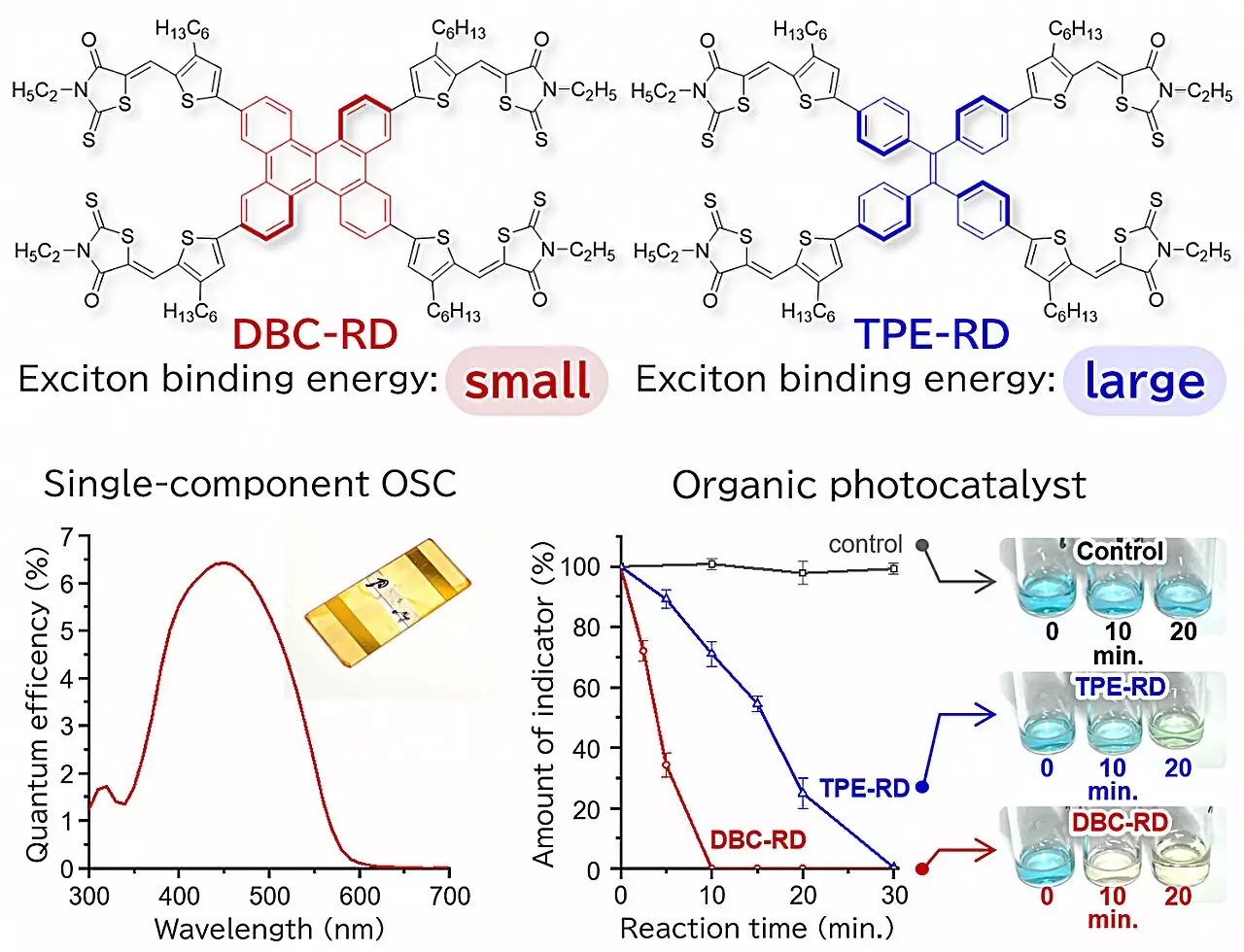

In the quest for sustainable energy solutions, harnessing solar power has emerged as a leading candidate to pave the way toward a cleaner future. Optoelectronic devices, particularly solar cells, play a crucial role in converting sunlight into usable electricity. As we face mounting challenges related to climate change and energy scarcity, innovations in this field are more critical than ever. The focus on enhancing the efficiency of these devices has led researchers to explore various approaches, with particular attention to the configuration of the light-absorbing molecules involved.
A groundbreaking study conducted by a research team at Osaka University offers fresh insights into optimizing the efficiency of organic solar cells. The team investigated the relationship between exciton-binding energy—the energy necessary for the generation of free-charge carriers—and the stacking arrangements of light-absorbing organic molecules. Their research revealed that the performance of organic optoelectronic devices is significantly influenced by how these molecules aggregate when in their solid state. This discovery is pivotal because it opens avenues to design molecules that not only function effectively when dissolved but perform optimally in solid films.
The research distinctly categorized two types of star-shaped molecules: one featuring a flexible center and another with a more rigid structure. While both types demonstrated similar behaviors in solution, their performance diverged significantly once solidified. The rigid molecules exhibited excellent stacking capabilities, akin to neatly piled plates, leading to reduced exciton-binding energy. Conversely, the flexible molecules struggled with organization, resulting in higher exciton-binding energy and inferior device performance. This finding underscores the importance of molecular design in enhancing the practical application of organic solar technology.
Building upon their theoretical findings, the research team constructed a single-component organic solar cell and a photocatalyst using both types of molecules. The devices made from the rigid molecule displayed superior performance, a direct result of lower exciton-binding energy facilitating a higher generation of free-charge carriers. These results exemplify how molecular structure and arrangement can directly influence the efficacy of organic optoelectronic devices. Moreover, the implications of this research extend beyond mere efficiency. They serve as a foundation for advancing technologies that can significantly contribute to renewable energy systems.
The implications of the Osaka University team’s findings are profound. By demonstrating that the aggregation of molecules can influence exciton-binding energy and, subsequently, device efficiency, they have set the stage for a new wave of innovation in organic optoelectronics. As researchers continue to refine our understanding of molecular interactions, the path toward creating high-performance, flexible, and lightweight solar cells becomes clearer. This revolution in molecular engineering could propel the organic solar industry into a new era, creating a more sustainable energy future for all.
The battle against antimicrobial resistance (AMR) has become one of the paramount public health challenges…
In our relentless pursuit of healthier lifestyles, the craze for sugar alternatives has become a…
As climate change continues to wreak havoc globally, Africa's vulnerability makes it imperative for nations…
The realm of quantum technology has long been hailed as the next frontier in scientific…
The fascination surrounding black holes often breeds misconceptions, particularly the idea that they obliterate not…
In a groundbreaking endeavor, researchers at Trinity College Dublin have merged the worlds of chemistry…
This website uses cookies.